This post may contain affiliate links. For more information, please see our affiliate policy.
Master how to make mustard in just 15 minutes! To use in salad dressings, marinades, or as a sandwich spread, my homemade yellow mustard and homemade whole grain mustard recipes are so simple and affordable to DIY.
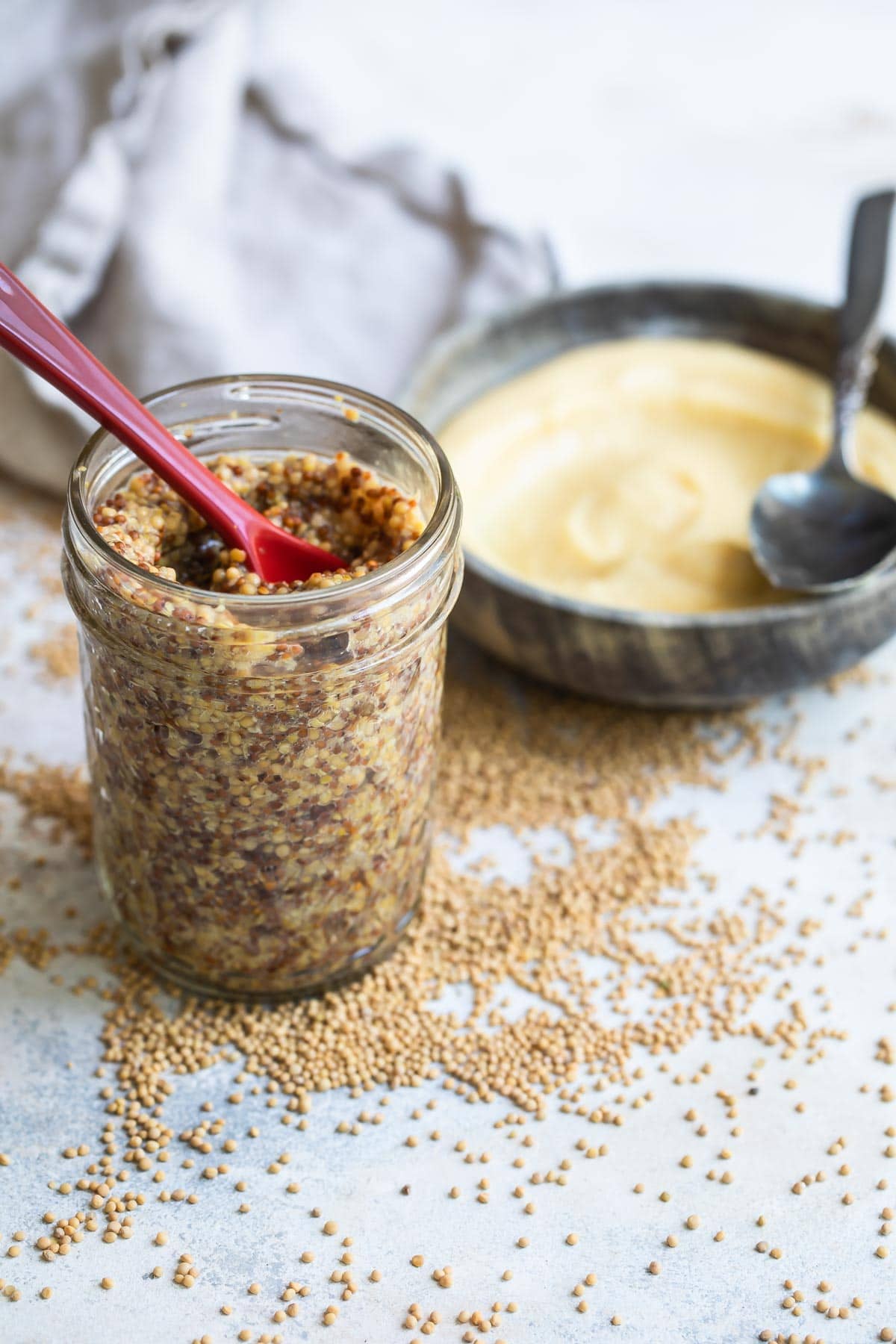
If I’m making a Charcuterie Board, sometimes I’ll spend the extra few minutes of prep to make my own mustard. Especially with whole grain mustard, it’s mostly just time spent waiting for the seeds to soften before you blitz in a blender.
What’s the point? Bragging rights, relaxation, using up mustard seeds, all of the above. It’s certainly cheaper than buying a jar of imported French mustard, so seize that reason if you’re looking for one.
Table of Contents
Recipe ingredients
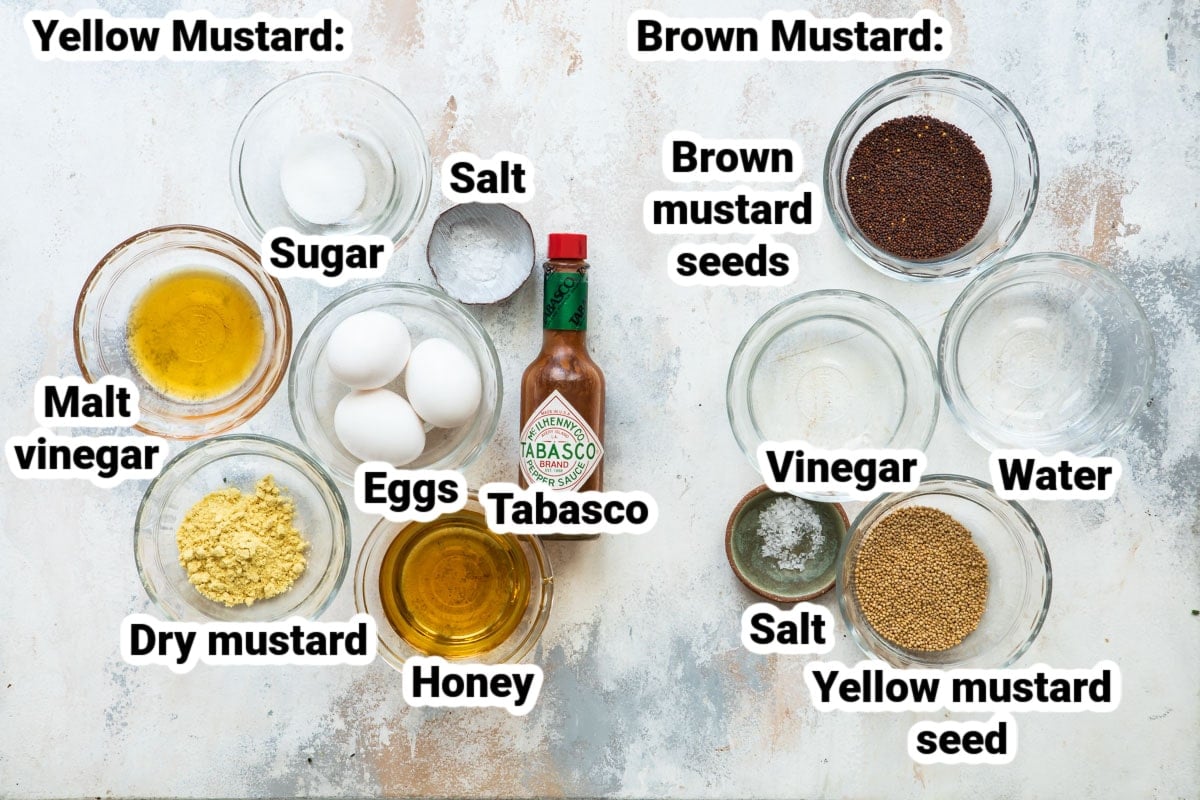
At a Glance: Here is a quick snapshot of what ingredients are in this recipe.
Please see the recipe card below for specific quantities.
Ingredient notes
- Malt vinegar: Commonly used as to brighten Fish and Chips, this vinegar tastes a bit like a malted ale. Think: Lemon, nut, and caramel notes.
- Tabasco sauce: Just a dash is all you need to balance out the honey’s sweetness.
- Honey: Yes, I know this homemade mustard recipe is for yellow mustard not honey mustard, but a couple tablespoons do wonders to complement the heat of the mustard seeds.
- Brown mustard seeds: Look for these in the baking aisle near the dried herbs and spices. If you can’t find them locally, you can buy brown mustard seeds online.
- Yellow mustard seeds: You can also buy yellow mustard seeds online.
- Beer, wine, hard cider, or fruit juice: Mustard gets its signature bite when a chemical inside the mustard seeds react with a cool liquid. For the whole grain mustard, choose your favorite beer, white wine, hard cider, or fruit juice. Or use water instead.
Step-by-step instructions
To make the yellow mustard:
- In a medium bowl, whisk together mustard, sugar, and salt. Add eggs and whisk until smooth. Whisk in vinegar, Tabasco, and honey and beat until combined. Cover and refrigerate for 1 to 2 hours.
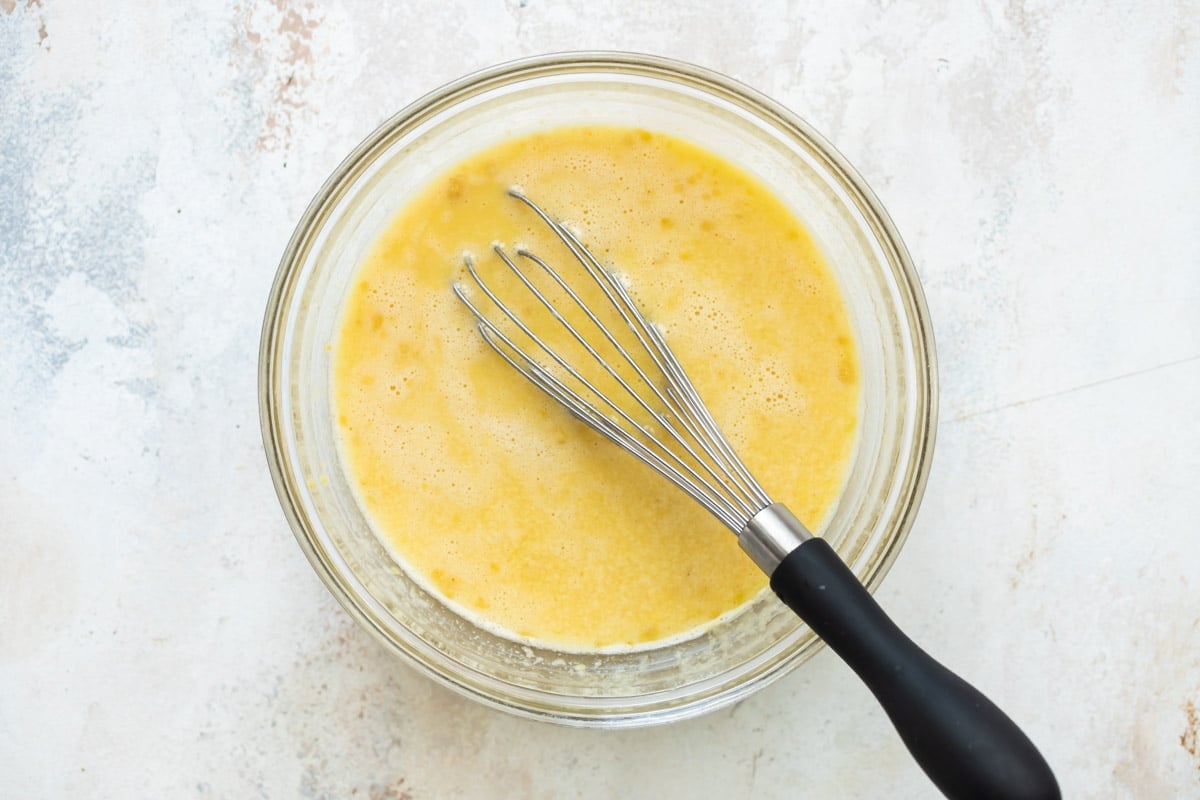
- Make a double broiler by setting a glass or metal bowl over a pot of gently simmering water (do not let the water touch the bowl). In the double boiler over medium-high heat, beat mixture until thick and creamy.
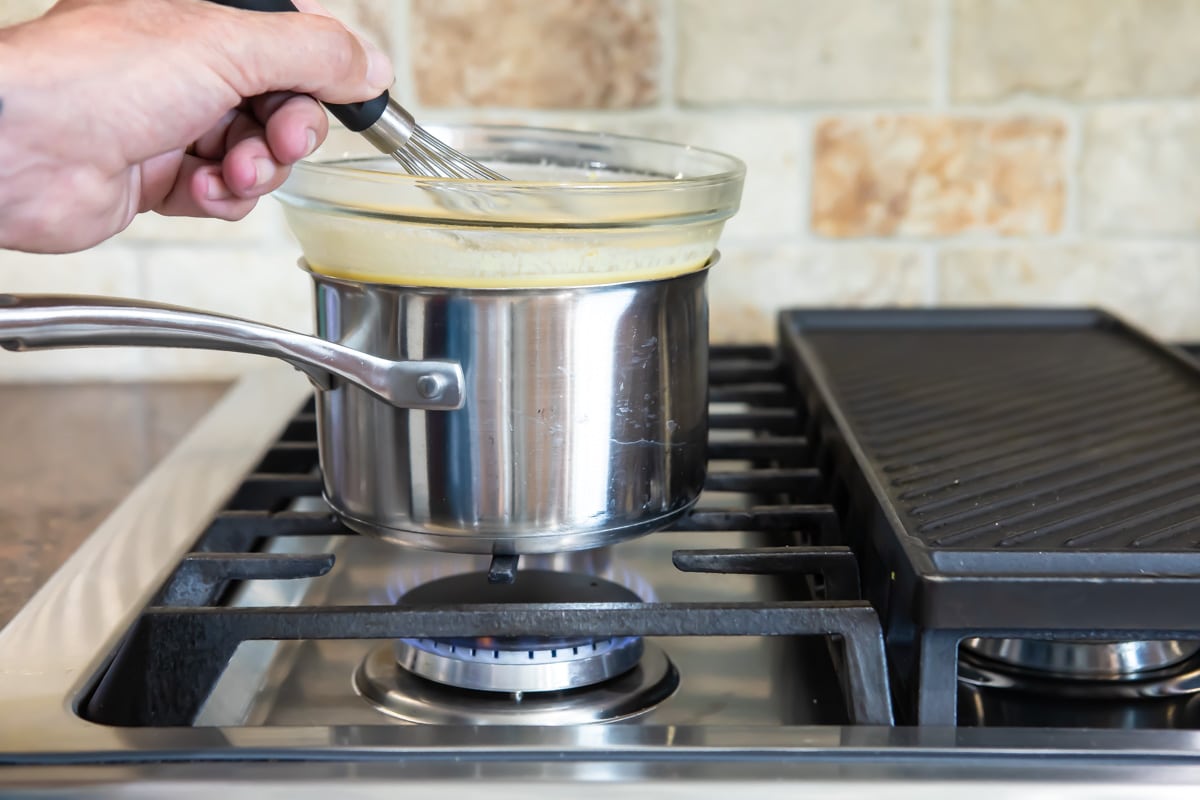
- Cover and return to the refrigerator until cold. Transfer to an airtight container, and store for up to 2 weeks.
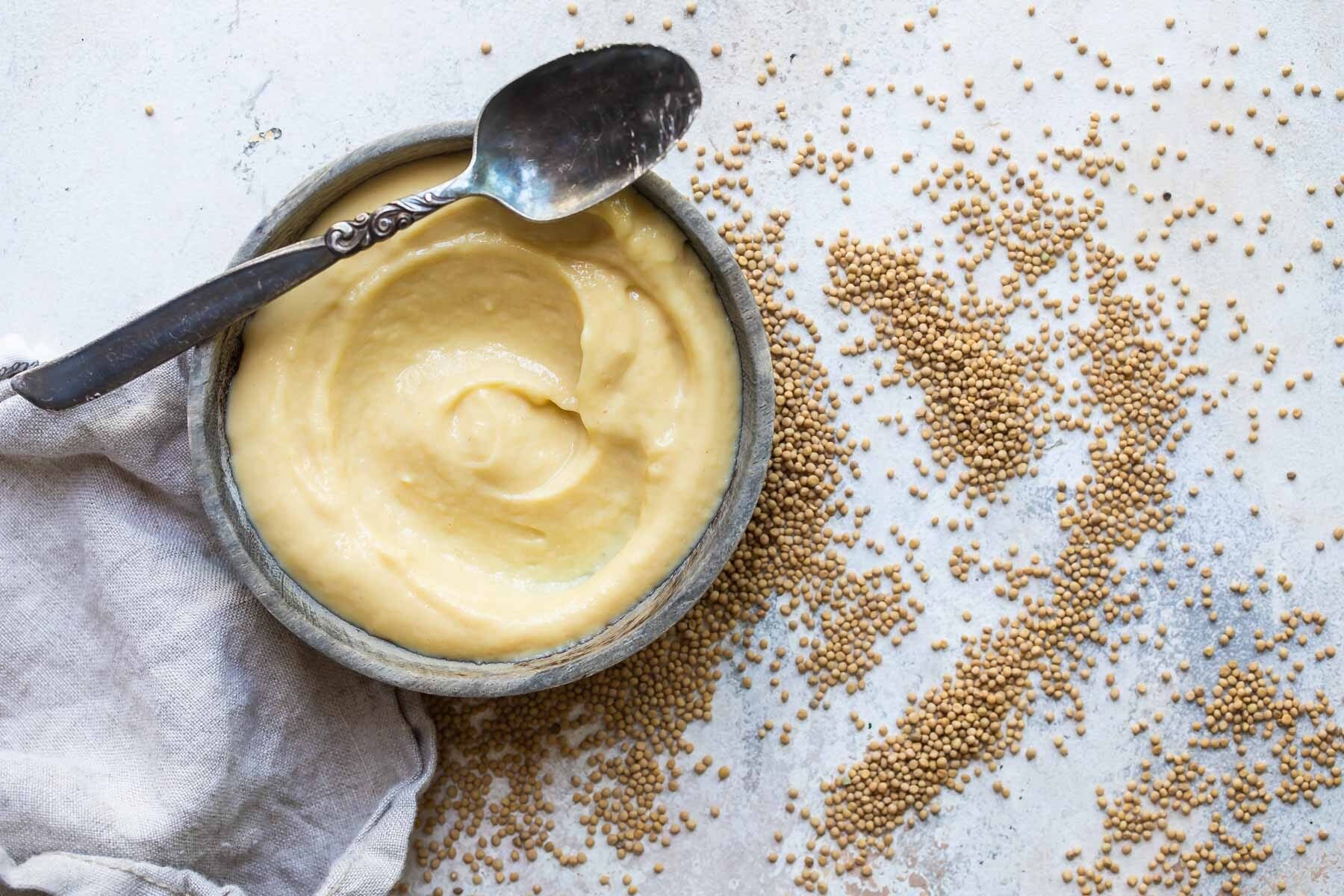
To make the whole grain mustard:
- In a medium container with an airtight cover, add the yellow mustard seeds, brown mustard seeds, cold water, and vinegar. Stir to combine, cover, and refrigerate at least 8 hours or overnight.
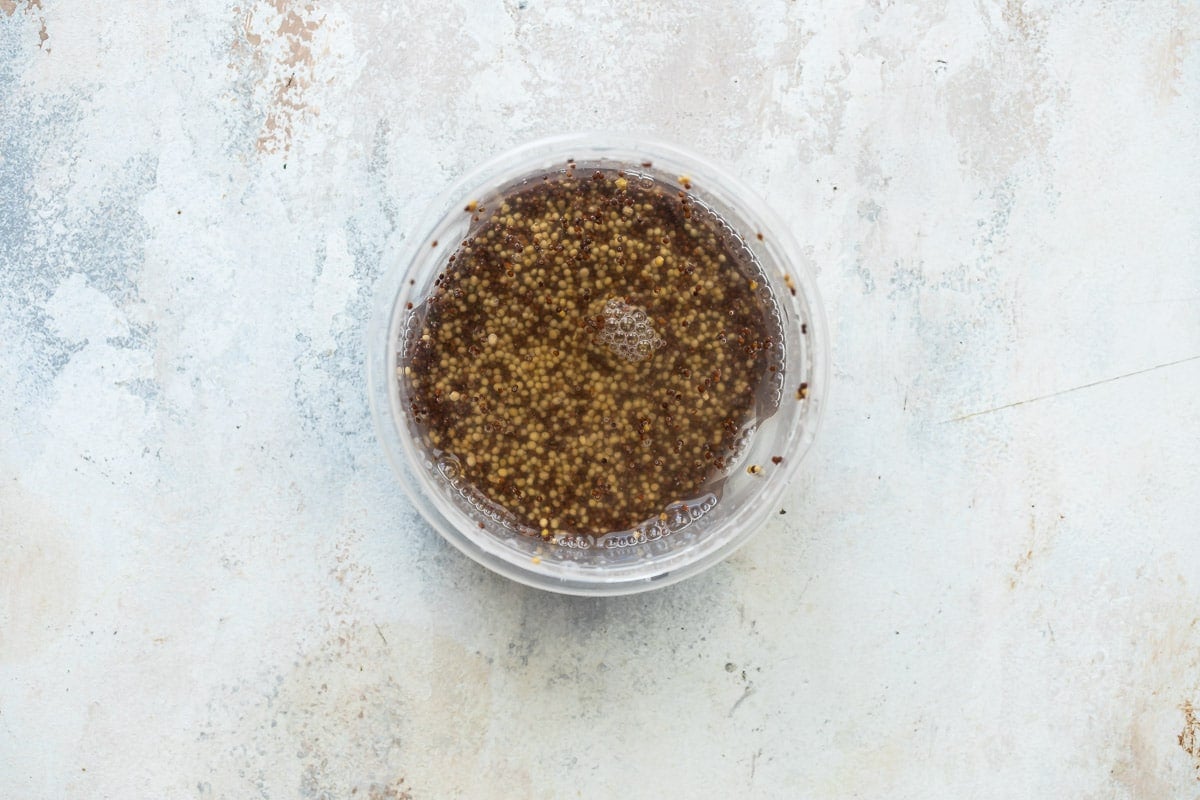
- In a food processor or blender, pulse mustard seed mixture and salt until coarsely ground or desired consistency, about 1 minute.
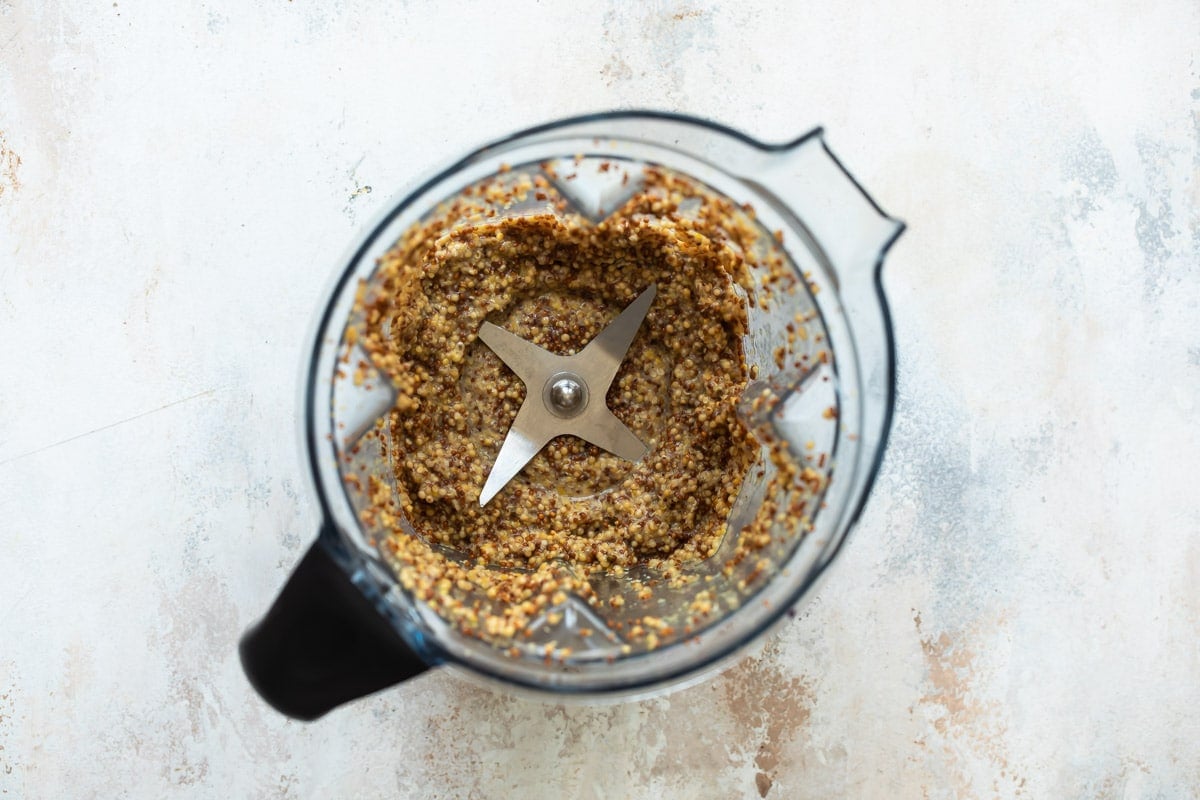
- Transfer to a glass airtight container and allow to sit at room temperature until desired spiciness is reached, 1 to 2 days. Store in the refrigerator up to 2 weeks.
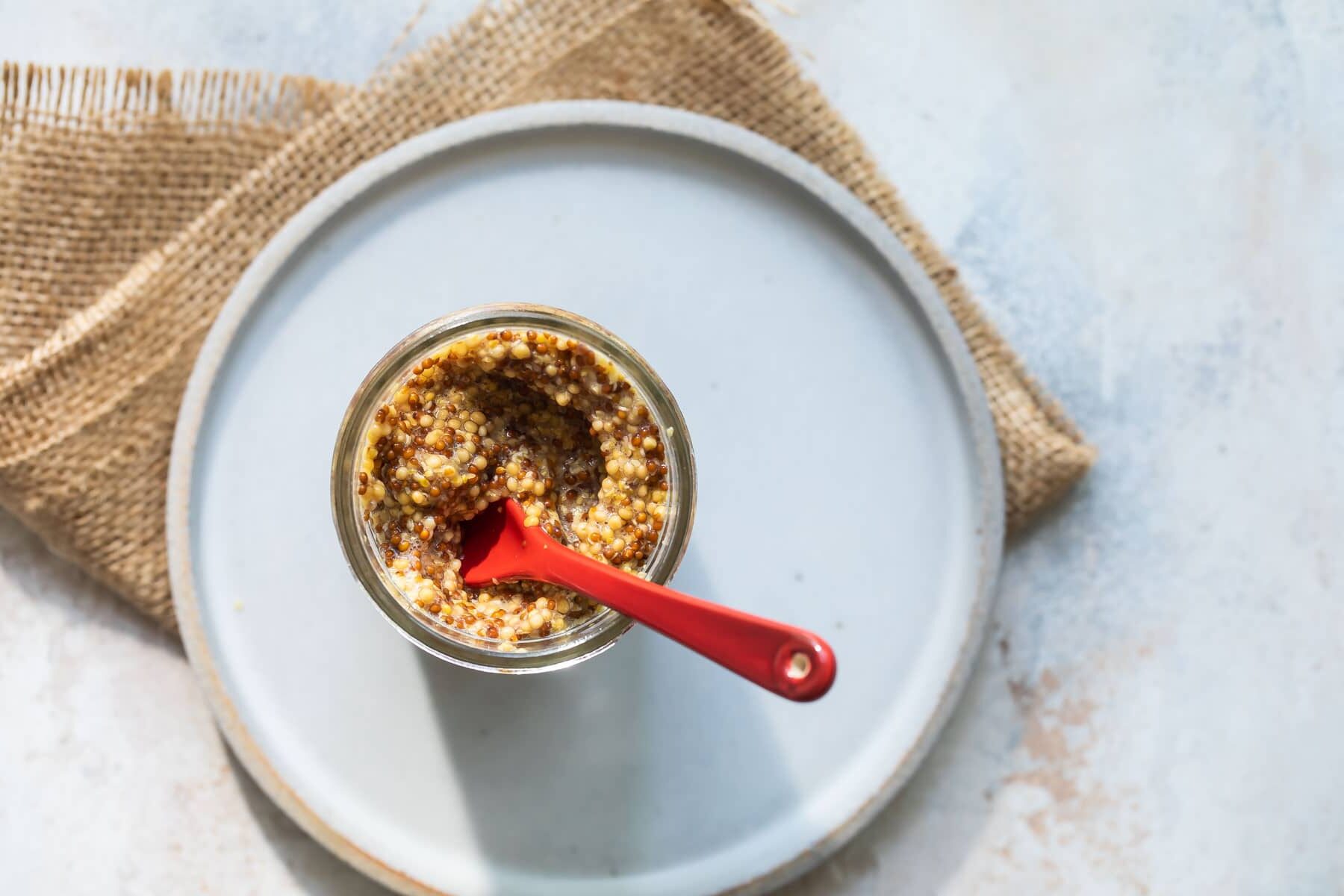
Recipe tips and variations
- Yield: Each recipe makes about 1 cup of mustard, or 8 (2-tablespoon) servings. If you make both recipes, you’ll have 2 cups of mustard or 16 (2-tablespoon) servings.
- Storage: Transfer the homemade mustard to an airtight container, and store in the refrigerator for up to 2 weeks.
- Freezer: Mustard can be frozen for up to 1 year. Some cooks like to freeze it in ice cube trays so they can thaw small portions when needed.
- DIY double boiler: To make a double boiler for the homemade yellow mustard, gather 2 pots, one of which fits inside the other. Fill the bottom pot with one or two inches of water. Next, fit the top pot inside (make sure the water doesn’t touch the upper pot) and turn on your stove to a simmer. As the water heats up and steam is released, the steam stays trapped between the two pots, which then heats the ingredients in the top pot.
- Great ways to enjoy mustard: Try these homemade mustards on your favorite deli sandwich, hot dog, or burger. Or add it to one of my recipes like Cheeseburger Quesadillas, Slow Cooker Baked Beans, Easy Potato Salad or Lemon Vinaigrette.
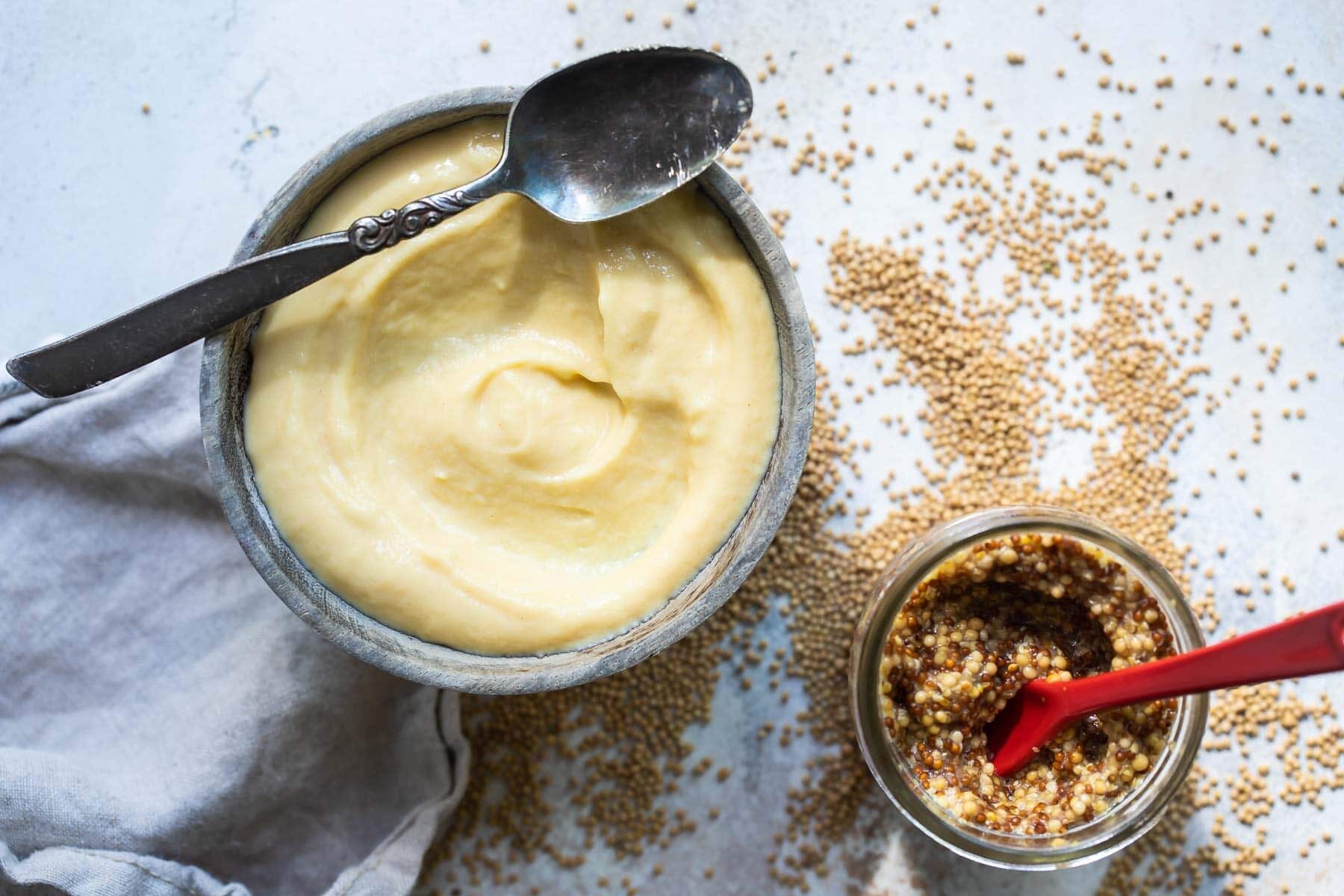
Recipe FAQs
The main ingredient in mustard is mustard seeds. Sometimes they are whole (as in whole grain mustard) and sometimes they are ground (as in yellow mustard).
Transfer homemade mustard to an airtight container and store in the refrigerator for up to 2 weeks. Or, freeze mustard for up to 1 year. Some cooks like to freeze it in ice cube trays so they can thaw small portions when needed.
Put your mustard to use
Bread Recipes
Homemade Soft Pretzels
Sandwich Recipes
Loose Meat Sandwich (Maid-Rite Copycat)
Sandwich Recipes
Ham and Cheese Sliders
Sandwich Recipes
Pork Burgers with Feta Mustard
Join Us
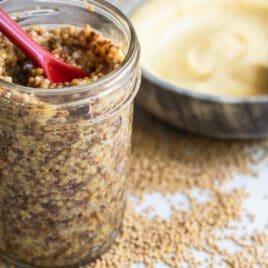
How to Make Mustard
Ingredients
For the yellow mustard:
- 3 tablespoons dry mustard (1 ounce)
- 1 1/2 teaspoons granulated sugar
- 1/2 teaspoon salt
- 3 eggs
- 4 ounces malt vinegar (see note 1)
- dash Tabasco sauce (see note 2)
- 2 tablespoons honey (see note 3)
For the whole grain mustard:
- 1/4 cup brown mustard seeds
- 1/4 cup yellow mustard seeds
- 1/4 cup cold water or beer, wine, hard cider, or fruit juice (see note 4)
- 1/2 cup white vinegar or vinegar of choice
- 3/4 teaspoon salt
Instructions
To make the yellow mustard:
- In a medium bowl, whisk together mustard, sugar, and salt. Add eggs and whisk until smooth. Whisk in vinegar, Tabasco, and honey and beat until combined. Cover and refrigerate for 1 to 2 hours.
- Make a double broiler by setting a glass or metal bowl over a pot of gently simmering water (do not let the water touch the bowl). In the double boiler over medium-high heat, beat mixture until thick and creamy. Cover and return to the refrigerator until cold. Transfer to an airtight container, and store for up to 2 weeks.
To make the whole grain mustard:
- In a medium container with an airtight cover, add the brown mustard seeds, yellow mustard seeds, cold water, and vinegar. Stir to combine, cover, and refrigerate at least 8 hours or overnight.
- In a food processor or blender, pulse mustard seed mixture and salt until coarsely ground or desired consistency, about 1 minute.
- Transfer to a glass airtight container and allow to sit at room temperature until desired spiciness is reached, 1 to 2 days. Store in the refrigerator up to 2 weeks.
Recipe Video
Notes
- Malt vinegar: Commonly used as to brighten Fish and Chips, this vinegar tastes a bit like a malted ale. Think: Lemon, nut, and caramel notes.
- Tabasco sauce: Just a dash is all you need to balance out the honey’s sweetness.
- Honey: Yes, I know this homemade mustard recipe is for yellow mustard not honey mustard, but a couple tablespoons do wonders to complement the heat of the mustard seeds.
- Beer, wine, hard cider, or fruit juice: Mustard gets its signature bite when a chemical inside the mustard seeds react with a cool liquid. For the whole grain mustard, choose your favorite beer, white wine, hard cider, or fruit juice. Or use water instead.
- Yield: Each recipe makes about 1 cup of mustard, or 8 (2-tablespoon) servings. If you make both recipes, you’ll have 2 cups of mustard or 16 (2-tablespoon) servings.
- Storage: Transfer the homemade mustard to an airtight container, and store in the refrigerator for up to 2 weeks.
- Freezer: Mustard can be frozen for up to 1 year. Some cooks like to freeze it in ice cube trays so they can thaw small portions when needed.
Nutrition
Meggan Hill is a classically-trained chef and professional writer. Her meticulously-tested recipes and detailed tutorials bring confidence and success to home cooks everywhere. Meggan has been featured on NPR, HuffPost, FoxNews, LA Times, and more.

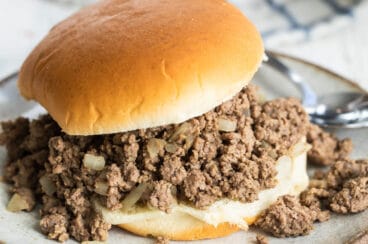

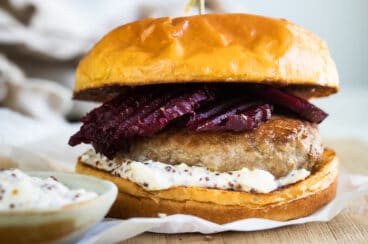
Hello, I have a family member who cannot eat eggs. Is there a good substitute for the eggs in your yellow mustard recipe?
Thanks.
Hi Katherine, thank you so much for your question! I haven’t tested a substitute for eggs in this recipe, sorry about that. I would recommend following one that has been written and tested without egg so you’re not left with bad mustard. Sorry again! – Meggan
How do you adjust the spiciness of the two mustards here. I understand the adjusting ratio of water and vinegar is how you do it but I don’t know which to decrease to increase the spiciness.
Hi Larry, I’m sorry for the late response, but wanted to make sure to answer so if you visit again or another reader has this question I can help! The coarser the grind is on the mustard seeds, the less spicy it will be. Also, the longer the mustard is in the refrigerator, it will mellow out some as well. Step 1 where we soak the seeds overnight is also to help reduce the spiciness of the seeds. I hope this helps and I’m sorry again I didn’t respond sooner. Take care! – Meggan